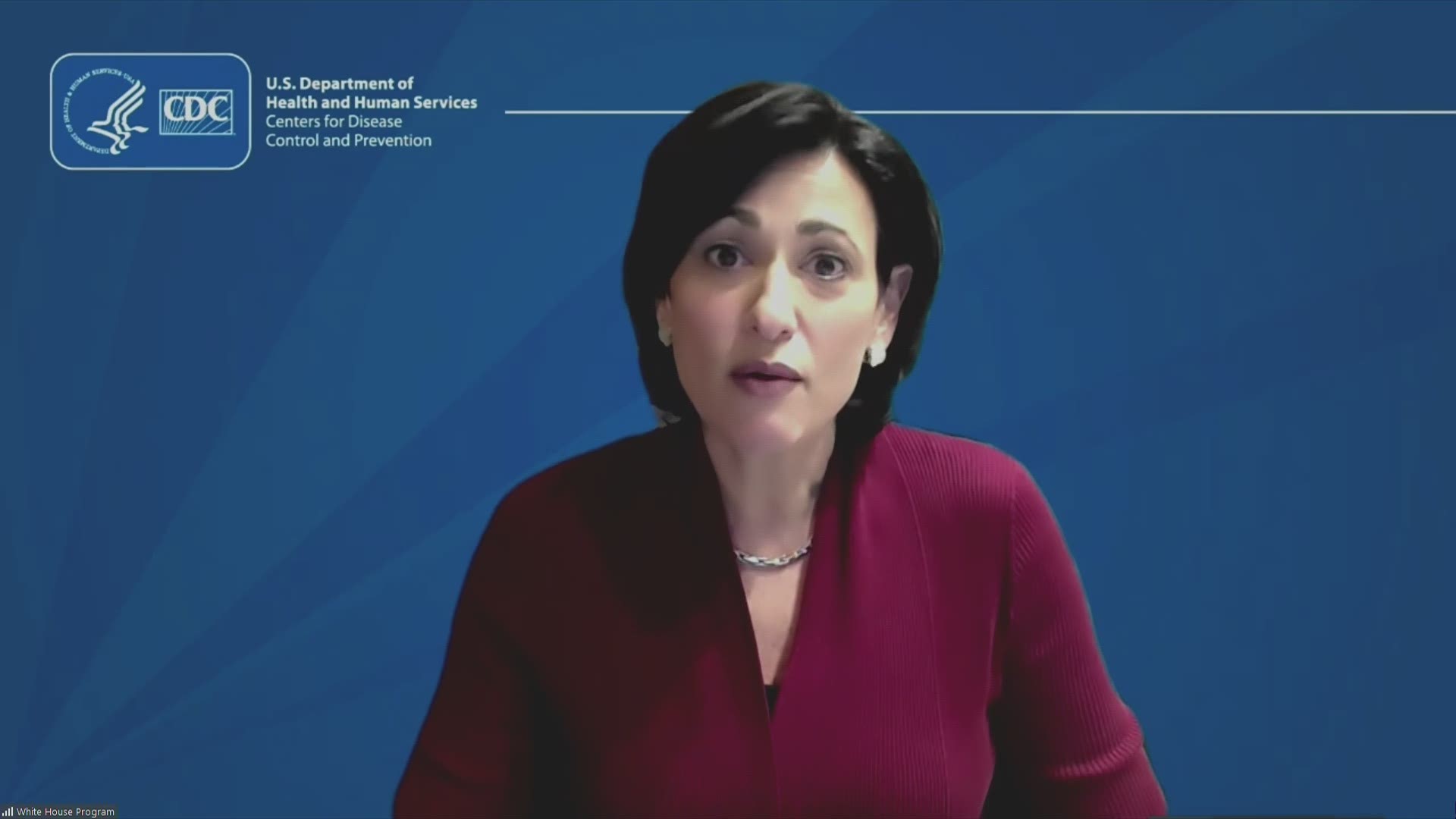We’ve heard a lot about vaccine efficacy and vaccine effectiveness in regard to the various COVID-19 vaccines getting approved.
Some vaccines have efficacy or effectiveness rates of 95% while others have rates closer to 66%. Viewers have been seeking clarity from VERIFY because of confusion surrounding what that means.
THE QUESTION
What is the difference between vaccine efficacy and vaccine effectiveness? What do the terms actually mean?
WHY WE ARE VERIFYING
Various viewers have sent in questions about the difference, and recently news outlets have written stories attempting to clarify the terms.
One viewer, Doug, asked the VERIFY team, “Could you explain the difference between 'efficiency' and ‘efficacy’?” He then referenced that the Johnson & Johnson vaccine has rates of 66% and the other two vaccines, Pfizer and Moderna, have rates of around 95%.
THE ANSWER
The difference between the two terms in the vaccine world is small and only serves to clarify the rigor of the data.
Both terms measure how much less likely someone is to get the disease than if they had not been vaccinated. So a COVID-19 vaccine with a 95% efficacy or effectiveness means it will make someone 95% less likely to get COVID-19.
It does not mean 95% of recipients are protected from the disease and five percent are not, as some may assume.
WHAT WE FOUND
“Vaccine efficacy and vaccine effectiveness measure the proportionate reduction in cases among vaccinated persons,” a Centers for Disease Control page explains. “Vaccine efficacy is used when a study is carried out under ideal conditions, for example, during a clinical trial. Vaccine effectiveness is used when a study is carried out under typical field (that is, less than perfectly controlled) conditions.”
A World Health Organization slideshow echoes this explanation.
“[Vaccine efficacy is percent] reduction in disease incidence in a vaccinated group compared to an unvaccinated group under optimal conditions,” the WHO information states. It then says that vaccine effectiveness is the ability of the vaccine to prevent certain outcomes in the “real world” and highlights that this requires less stringent eligibility.
The definitions from these organizations in particular are important because manufacturers have to share these outcomes with government bodies in the specific language these governments use in order to get their vaccines approved.
An article in the medical journal The Lancet actually tackled the misconception around what vaccine efficacy means directly — even pointing out that writing in its own publication has made this mistake.
“It means that in a population such as the one enrolled in the trials, with a cumulated COVID-19 attack rate over a period of 3 months of about 1% without a vaccine, we would expect roughly 0.05% of vaccinated people would get diseased,” the article’s author, Piero Olliaro, said. “It does not mean that 95% of people are protected from disease with the vaccine—a general misconception of vaccine protection also found in a Lancet Infectious Diseases Editorial.”
A published study for a real vaccine trial shows how this gets measured. This study, published last month, explains how a vaccine trial gave 15,120 people the vaccine and 15,120 people a placebo, which is essentially a fake with nothing actually in it. In that study, 185 people who received the placebo became symptomatic with COVID-19 compared to only 11 people who had received the real vaccine. Between the two groups, 94.1% fewer people in the vaccine group became symptomatically ill.
The story continues below this video. Check out previous stories on the VERIFY YouTube channel.
Understanding the difference between this measure of efficacy and the other, wrong definition of efficacy is important. The math shows there is a very clear difference in how a disease spreads between the two definitions.
Olliaro explained that there’s an important distinction between people who are protected by a vaccine and the actual number of the population that is disease-free.
Many people perceive a 95% effective vaccine would mean that 5% of a population will still get the virus. That’s not the case.
It’s a bit simpler to explain with a math example:
Many people perceive a 95% effective vaccine means: If 100,000 people are vaccinated and the vaccine protects 95% of them, “that would leave 5,000 [5%] individuals diseased over 3 months.”
But the numbers actually look like this: 100,000 people are vaccinated. Before the vaccinations, they would have expected an “attack rate” of about 1% or 1,000 COVID-cases in that population. After the vaccines, that 1% is reduced by 95% and now only .05% of the population is expected to get sick - or about 50 people.
Over the last month, the CDC estimates the United States has had a rate of 689 new COVID-19 cases per 100,000 people. If the entire population received a vaccine with a 95% efficacy, that rate drops to about 34.5. If the entire population received a vaccine with a 66% efficacy, that rate drops to about 234. Both are far lower than what the rate would be if vaccines only protected 95% of recipients.
Basically, whatever rate of the population is getting COVID-19 now, a population fully vaccinated by the Pfizer and Moderna vaccines would have a rate 95% lower and a population fully vaccinated by the Johnson & Johnson vaccine would have a rate 66% lower.
Those rates were measured through studies where researchers were able to compare their results through control groups. That’s efficacy. In the coming months, researchers will be able to compare the disease rate of those who have received the vaccine to those who have not. That will be effectiveness.
Something you’d like VERIFIED? Click here to submit your story.

